President Obama's State of the Union may not have mentioned NASA by name, but the nation's space program was represented, in a way, by the attendance of Bobak "Mohawk Guy" Ferdowsi, the iconic member of the team that landed NASA's Curiosity rover on the surface of Mars.
Mr. Ferdowsi was a special guest of the first lady, there to highlight the president's support of science, technology, engineering, and mathematics (STEM) fields. But he also symbolized something more: will NASA -- an agency with the potential to achieve great things, to inspire and educate countless millions, and to help spur America's leadership in the global economy -- remain merely a fleeting guest at the administration's party? Or will it be unleashed in support of the president's second-term goals?
NASA is known for its soaring goals in exploration, national prestige, and planetary defense in the form of NEO (near-Earth object) detection. But pursuing the goals of the U.S. space program presents an extraordinary opportunity for the administration's second-term domestic agenda. A path to a strong manufacturing base, STEM education, advances in clean energy, and ultimately a thriving middle-class, goes through space.
It's no surprise that a vigorous space program stimulates rapid technological development. Even the minimum physical requirements for NASA's missions of exploration are steep and require innovation and creative problem-solving, spurring spinoffs with wide-ranging applications. High-efficiency solar panels for power generation in deep space and reliable, low-power electronics are just a few examples of how looking outwards to space provides us with solutions to problems right here at home.
NASA's robotic missions often operate for more than a decade in the harsh depths of space without a single tune up or repair. This demands high-precision parts and engineering know-how that drives the manufacturing base in this country to deliver unparalleled quality and craftsmanship.
Beyond manufacturing and technological development, the space program is uniquely suited to enabling major aspects of the administration's domestic agenda.
More than any other industry, the space program incites passion, daring, and inspiration among the public. It motivates people, young and old, to pursue math, science, and engineering in school -- the all-important STEM fields that are required for our country to remain competitive -- and the reason Mr. Ferdowsi was invited to the State of the Union.
NASA sets the goalposts far afield and dares people to reach them. By taking on such extreme challenges -- like returning a sample of Mars to the Earth, or landing on Jupiter's moon Europa to explore its subsurface ocean -- it inspires generations of people to choose STEM fields in the hope that they too may be part of a bold and imaginative future.
While not everyone will end up working on such missions, the road to success in exploration inevitably leaves a wake of highly-trained teachers, engineers, scientists, entrepreneurs, and computer specialists. The majority of these people, trained or at least inspired by the space program, go into private industry and become a crucial part of the new economy. These are well-paying jobs and lead to a permanent place within the middle-class.
We cannot underestimate the power of motivation. How many scientists were made the day that the Curiosity rover landed? Engineers? Teachers? How many middle-class jobs will be created down the road?
Just as we saw a dramatic expansion of our nation's engineering and science capabilities in the wake of Apollo, we will see the effects of our daring landing on Mars and other space ventures in the next generation. Should the administration fully embrace the vast potential of the space program to help fulfill his domestic agenda, this effect will only be amplified. Providing a passionate motivation for individuals to pursue these goals in STEM fields is just as important as giving them the means to do so.
As a practical matter, NASA enjoys rare bipartisan support in Washington. By embracing this popular program and giving it the means to pursue a course of unparalleled discovery, the administration could see many of its domestic goals achieved with the cooperation of Congress.
Only modest increases in the budget (back to FY12 levels), and then stability of that budget, would be required to reinvigorate the program. NASA's total funding represents a mere 0.5 percent of the federal budget, and its program for robotic exploration (the same program that landed Curiosity) a microscopic 0.04 percent.
But despite Mr. Ferdowsi's presence at the State of the Union, Curiosity's appearance at the Inaugural parade, and the enormous potential of NASA to support the administration's goals, NASA's overall budget has been pared back over the years. The agency's division that employs Mr. Ferdowsi, Planetary Science, had its budget slashed by more than 20 percent this past year. Sequestration would only further damage this.
NASA provides inspiration that inevitably leads to innovation. By showcasing Mr. Ferdowsi, who represents the unrivalled potential of NASA's engineering, science, educational, and motivational contributions to the nation, the administration highlighted the space program as a powerful tool in enabling its domestic agenda. With stable funding and solid Congressional support, NASA's success can be America's success.
Jim Bell is a planetary scientist at Arizona State University and the President of The Planetary Society, the world's largest public space advocacy organization. This post was co-written with Casey Dreier, the Advocacy and Outreach Strategist for The Planetary Society.
